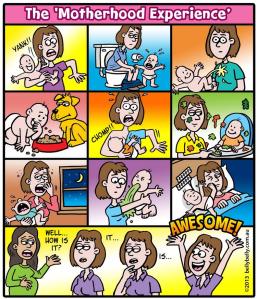My 81 year old dad has been having a rocky couple months.
It started with weakness and giddiness; then a feeling of numbness in his limbs; then incidences of blurred vision and slurred speech – classic stroke symptoms.
My brother and I started the usual merry go round that all caregivers of senior citizens go through – emergency-neurologist-cardiologist-nephorologist-endocrinologist-back to emergency-repeat cycle. Threw in sessions with a GP, and then a couple operations of the eye at the ophthalmologist.
Went to two hospitals, and 4 branches of one of them.
Was completely appalled at the isolated nature of patient information access and diagnostists available, even at the best hospitals, in the Silicon Valley of India. And this, when we are debating the use of Wearables, Internet of Things and Big data all the time!
Lets look at the possibilities for the Healthcare IoT first:
– At the individual/ patient level –
The ultimate beneficiaries, patients (both current and potential/ future), will basically create and consume larger amounts of data than ever before – due to wearables (e.g. Tempo from CarePredict) / implants/ other gadgets and devices owned.
This will enable better monitoring of behaviour, and, when coupled with context – facilitate hugely improved diagnostics. Diagnostics that are derived from integrated data – multi disciplinary, as well as omnichannel/ source. (So, no more – “your sodium is low, eat more salt – says nephrologist — uhhh, but BP is high, reduce salt says cardio”! )
These diagnostics will then not only treat any emergencies or negative incidences quicker/ more competently, but also act proactively – thus alerting users and discouraging them from harmful behaviours (too much smoking/ not enough walking/ too many carbs/ not enough sleep….)
This personalised patient care, is after all, the raison-d-etre of the wearables market, which, according to a recent IDC report, is set to reach 45.7 million units worldwide in 2015, and 126.1 million units in 2019.
The IoT approach can then be taken a step further – and use gamification techniques to reward compliant medical behaviour. (My constantly sudoku playing dada and candy crushing mom I’m sure will be very vulnerable to these approaches!)
– At the macro/ aggregated level –
Obviously, when taken as a large body of data, analytics organisations can develop and fine tune personas and segments, making them richer and more detailed. The way to do this would be to combine biomed research using life sciences databases with aggregated patient behaviour and symptoms. This should ideally ultimately result in predictive models, thus leading to better treatment. Basically, a higher emphasis on real time monitoring and intervention combined with traditional lab work becomes the new clinical research methodology! In long term vision, companies and nations get a jumpstart on reducing burden of disease in the overall population.
– At the enterprise level –
Many studies are saying that providers may be able to save up to a quarter of their business costs with the Internet of Things. This would be done by integrating new technologies into their operational strategies. Think about it – a vast, dynamic mass of wearables, biometric sensors, smartphone add-ons, and other medical devices and implantables – all growing, shifting, and ripe for an IoT approach
– Miscellaneous –
The serious side of Healthcare IoT is only one side of the picture actually – the wearables landscape is fairly glamorous even from the early adopter tech consumer’s Point of View! Think Ping, a social networking garment developed by designer Jen Darmour; Smart socks that tell you when to change, and where the pair is; Electrozyme or Motorola digital tattoos (that always remind me of the Bourne Identity series); tweeting bras (to remind one of breast exam monthly); dream inducing headbands; Peekiboo, a cap that lets you see the world through your baby’s eyes; smart pajamas that help you with bedtime entertainment when your kids are ready for bed; i-Grow income hair growth helmet; Drumpants which is Multiple touch pads sewn into a pair of classy jeans give drummers a six-piece kit; and, the coolest of all, Necomimi, a set of feline-like ears that strap on to your head, supposedly measure brainwaves and then move and flick based on how you’re feeling at a given moment!
The Flip Side
But the real truth, atleast in India (as experienced by my dad and me) is a far cry from the vision. At the moment, there is NO healthcare Internet of Things – maybe just a random collection of medical devices and consumer monitoring technologies that don’t quite know what to do with each other!
Treatment is isolated – diagnosis is gut and experience based (which actually is not necessarily a bad thing – since, given India’s huge population, doctors do get to practice a lot and so see a wide variety of patients); there is very little digitisation even in the best hospitals. (In fact, in the hospital where we treated our dad, even within the 3 buildings in the same health city campus, there are different degrees of digitisation – the newest, the Eyecare hospital introduced EMR maybe 3-4 years ago, and so it’s all modern; the next oldest Multi Specialty Hospital now scans the written prescriptions of the doctor after you come out of the treatment room, (so, atleast keeping some records – though I’m reasonably confident nothing is being done with those scans yet); and the oldest, the Cardio facility I think still does nothing digital)
To answer the question – “why” – I think it really has to do with a basic question of population – in our country, we are too busy solving the Maslow’s Hierarchy lowest rung questions of food, clothing and shelter to spend too much money and time on other stuff. Coupled with legacy systems and old habits dieing hard, it’s a tough combo to beat!
And then there’s the question of reliability – many medical practitioners suspect non manual devices and gadgets – I have met with scepticism on the results of digital BP monitors from all doctors and nurses! (and my 10-times-a-day-BP-measuring dad’s experience shows significance differences between same time readings of manual/ analog BP monitors and the digital ones. Despite repeated calibrations!). So, reliability is suspect.
And, as yet, I’m not even stepping into the whole compliance/ medico-legal/ security aspect of the data
I think this is a bit like the “obvious” steps in customer centricity across functions and kind of business that are visible to everyone now with Big Data, but the fact is that no one is exploiting them – due to lack of vision, corporate lethargy, or even mal-intent in the form of vested interests! (watch out for the next blog on that topic in a few days). The good news – In a PwC study, 95% of healthcare CEOs said they were exploring better ways to harness and manage big data. The bad news – this is not confined to India alone – Read this article on how this state of affairs sadly seems true globally :(.
Maybe it’s just a matter of time – the question is how much time! Meanwhile, for my dad and me, it’s onwards and upwards to the next “o-logist” – this time the ENT specialist for new hearing aids! Yawwwnnnn….























